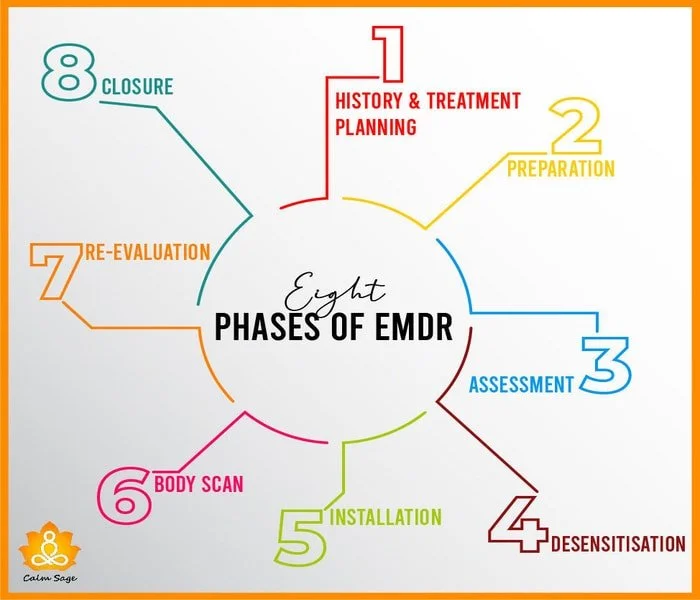Trauma Therapy: Healing Through Understanding and Connection
What Is Trauma?
Trauma is an emotional response to a distressing or disturbing event that overwhelms a person’s ability to cope. It can stem from a single incident—like an accident or assault—or from ongoing experiences such as childhood neglect, systemic oppression, or relationship abuse.
Everyone experiences trauma differently. What may feel manageable for one person can be deeply destabilizing for another. At its core, trauma is less about what happened and more about how your mind, body, and spirit responded to what happened.
What Is Trauma Therapy?
Trauma therapy is a specialized form of mental health treatment that helps individuals process and heal from traumatic experiences. It is a collaborative, compassionate process designed to restore a sense of safety, self-understanding, and empowerment.
The goals of trauma therapy include:
Creating a safe space for healing
Processing painful memories and emotions in a healthy way
Reconnecting with your body and sense of self
Building tools for emotional regulation and resilience
Rewriting unhelpful beliefs rooted in traumatic experiences
Types of Trauma We Support
We work with individuals who have experienced:
Childhood trauma or neglect
Racial, cultural, or generational trauma
Domestic violence or intimate partner abuse
Sexual trauma
Loss, grief, or abandonment
Complex PTSD or long-term exposure to distress
Whether your trauma feels "big" or "small," it is valid—and healing is possible.
Our Approach to Trauma Therapy
At Strong Foundations Counseling, we use evidence-based and culturally responsive approaches to support your healing journey. Our trauma-informed therapists work with you at your pace. We center consent, autonomy, and your unique lived experience.
Common trauma therapy approaches we may use include:
Cognitive Behavioral Therapy (CBT) – Helps you identify and reframe negative thoughts and behaviors linked to trauma.
EMDR (Eye Movement Desensitization and Reprocessing) – A powerful therapy that helps the brain process traumatic memories.
Somatic Therapy – Focuses on the connection between the mind and body to release trauma stored in the nervous system.
Internal Family Systems (IFS) – Helps you understand and care for different “parts” of yourself affected by trauma.
Ready to Take the Next Step?
We know reaching out can feel overwhelming. Our team is here to support you with care, curiosity, and without judgment. If you're ready to learn more or schedule a consultation, click here to contact us.
What is EMDR? (Eye Movement Desensitization and Reprocessing)
Eye Movement Desensitization and Reprocessing (EMDR) is a psychotherapy approach designed for working with distressing or traumatic memories. Eye movements (or other bilateral stimulation) are used to track client’s field of vision back and forth for enhance memory processing while holding a target. The process connect biological mechanisms involved in Rapid Eye Movement (REM) sleep, internal associations arise to process the memory and disturbing feelings.
EMDR doesn’t erase your memories—it helps your brain reprocess them so they no longer feel like they’re happening in the present. You may still remember what happened, but it will feel less emotionally charged and no longer define how you see yourself today.
You are in control every step of the way. Your healing will happen at your pace, with your voice centered.
EMDR is a structured therapy that helps people heal from trauma and distressing experiences by reprocessing memories that feel "stuck." The therapy is organized into 8 distinct phases. Here's what that looks like:
Phase 1: History Taking & Treatment Planning
We begin by getting to know you—your story, your challenges, and your strengths. We explore your past experiences, current symptoms, and goals for therapy.
Phase 2: Preparation
You’ll learn tools to feel grounded and safe, such as calming techniques and ways to manage strong emotions. Before diving into difficult memories, it’s important that you feel emotionally equipped and supported.
Phase 3: Assessment
Together, you and your therapist select a specific memory to target. This phase sets the foundation for the reprocessing work. You’ll identify:
A picture or image that represents the memory
Negative beliefs you hold about yourself related to the memory
Positive beliefs you want to believe instead
Body sensations and emotions connected to the memory
Phase 4: Desensitization
This is where the processing begins. While focusing on the target memory, your therapist will guide you through sets of eye movements, tapping, or sounds (bilateral stimulation). Your brain begins to reprocess the memory naturally. Over time, the memory becomes less emotionally intense and more neutral.
Phase 5: Installation
Once the memory feels less distressing, you and your therapist strengthen the positive belief you want to hold about yourself (e.g., “I am safe now,” “I am strong,” “It wasn’t my fault”). This helps replace old, harmful beliefs with ones that support your healing.
Phase 6: Body Scan
You’ll do a gentle mental scan of your body while thinking about the memory and positive belief. This helps clear any lingering physical tension or emotional residue related to the memory.
Phase 7: Closure
Each session ends with grounding techniques to ensure you leave feeling stable and safe, even if processing is still in progress. Your well-being between sessions is important. We want you to feel in control and cared for.
Phase 8: Reevaluation
At the beginning of the next session, you and your therapist check in to see how you’re feeling and whether the memory still feels resolved. If needed, you revisit or continue processing. Healing is not always linear. We continue to work until the memory and related beliefs feel truly resolved.


